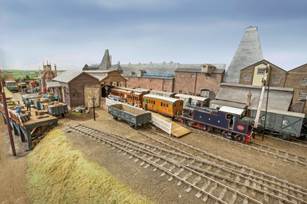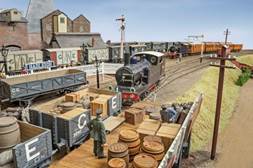|
|
|
|
If you would like to read this in its printed form open this PDF. To print that PDF use the 'Booklet' option. The History of Suffolk Farmsteads - Philip Aitkens The Paston Letters -Mark Mitchells Book LaunchOur chair, Margaret Woods, invites all Hadleigh Society members to the launch of her book Medieval Hadleigh: The Chief Manor and Town on Saturday 8th December 2018 in St Mary’s Church Hadleigh – held at the invitation of the Friends of St Marys. All Hadleigh Society members will be most welcome. Members may arrive around 5.40pm if they wish to enjoy a glass of wine or juice before the proceedings begin at 6.00pm. After introductions Margaret will present a short talk to include the development of the book, information on the early church and its rectors with a brief reading from the text and an outline summary of book content. It would be helpful if members could please let Margaret know if they hope to attend. (Tel: 823798, e-mail chair@hadsoc.org.uk or tell her at the Society meeting on Tuesday 4th December 2018)
|
|
Full rate |
will remain unchanged |
|
Senior |
Individual will change from £8 to £10 |
|
|
Couples will change from £12 to £15 |
|
Life members |
Individual will change from £120 to £150 |
|
|
Couples will change from £200 to £250 |
Elections - Mavis Winders was elected to the committee and the existing President, Officers and Committee Members were re-elected en bloc.
The AGM business was followed by fascinating talk given by Graham Panton about the ‘Astonishing Gayer-Anderson Twins’. Perhaps like me there were one or two people who hadn’t heard of them but soon realised how important they were to Lavenham and therefore the area. Both men had military backgrounds but were also very interested in and knowledgeable about the Arts and the history and beauty of objects. ‘The Colonel’ spent a lot of his career in India while ‘The Major’ was in Egypt and left some of his collection to what is now the Gayer-Anderson Museum in Cairo. Half of the Fitzwilliam Museum’s Egyptian collection is from the two brothers with bequests also made to various other museums including the British Museum. They bought The Great House and Little Hall in Lavenham and started restoration of the buildings in 1930. When complete they moved into Little Hall and sold The Great House. As well as being involved in the preservation of these and other buildings in Lavenham they were also responsible for there being no cables on view - they were put underground in 1931!
And, after a full and interesting evening there was still time to enjoy wine, nibbles and chat.
Mavis Winders
Dick Fletcher has commented on several planning applications on behalf of the Society since the last newsletter. Here’s a summary of what was said. You can find the full details on our website and on the Babergh website.
The Society notes with disappointment, but with no great surprise at McCarthy and Stone’s dumbing down of the designs of all the dwelling units on this development of which over half lie within the Conservation Area.
All architectural features, such as plinths, jettying, moulded bay windows, gable features, sash windows, symmetrical window placements that gave the dwellings an air of distinctive character and contended in the original Design, Access and Sustainability statement as reflecting the special architectural character of the Conservation Area are removed from all 29 dwellings.
This current set of alterations and modifications to the units obviously has nothing to do with maintaining a higher level of good quality design in a Conservation Area, which is totally contrary to the thrust of recent national design policy given in the Revised NPPF, Section 12: Achieving Well Designed Places. In particular it is hoped that the Council will note the advice given in paragraph 130 which states:-
“Local planning authorities should also seek to ensure that the quality of approved development is not materially diminished between permission and completion, as a result of changes being made to the permitted scheme (for example through changes to approved details such as the materials used).”
The Society requested that the Council reject these amendments.
The Society welcomes the proposed replacement swimming pool as the current pool building is now appearing a little worn and tired. The new pool building appears to be both in scale and in keeping with the style of the Leisure Centre building. It is critical however that the exterior wall and roofing materials do match those used on the Leisure Centre building. It is also an opportunity to enhance the Complex’s setting within the park with new landscaping of shrubs and medium sized trees on its south western and south eastern elevations.
Any development of this nature should contribute to and enhance the natural and local environment, encourage the effective use of land, be focused in locations which are or can offer genuine modes of sustainable transport, be visually attractive and add to the local character as a result of good architecture, layout and effective landscaping. These are all important requirements set out in the Revised NPPF which, amongst other updates, has increased emphasis on sustainability of locations and good design. This scheme fails to meet many of these aspirations and particularly the economic, social and environmental objectives set out in paragraph 8 of the Revised NPPF. We requested refusal
At this year’s AGM the suggestion was made that, for a variety of reasons, it was “unfair” to charge members who were part of a couple less per head than single members. This practice is common in clubs and societies and is probably based on the reasoning that a couple would share newsletters, etc., so the club or society could service a couple for much the same cost as a single member. Nowadays when most communication is done electronically, as we do, this argument does not apply: there is virtually no cost to an extra email.
The discussion mostly concerns Senior Members – they greatly outnumber Full Members as shown in the table below, based on our present membership. This assumes that all “other halves” among Seniors are interested and active members: are they really, or is it just inertia that keeps them in? The question is: how many of these members would we lose by changing to a flat fee? If we lost half of them then the fee would need to increase from £8.50 to £10.00. Single Senior members would not then have saved anything but the Hadleigh Society would have lost 17 members. If everybody pays £10 (Full members included, Students excluded) life would be much simpler for the Membership Secretary!
We can have an interesting debate at the 2019 Annual General Meeting.
Chris Drake, Treasurer.
|
Type |
No. |
Fee |
Income |
“Unified” Fee |
Notes: |
|
Full Single |
4 |
£12.00 |
£48.00 |
£11.00 |
£1.00 less |
|
Full Joint |
2 x 2 |
£20.00 |
£40.00 |
£22.00 |
£2.00 more |
|
Senior Single |
40 |
£10.00 |
£400.00 |
£8.41 (say £8.50) |
£1.50 less |
|
Senior Joint |
35 x 2 |
£15.00 |
£525.00 |
£17.00 |
£2.00 more |
|
Total |
118* |
|
£1013.00 |
£1043.00 |
*excluding life members |
David Bousfield has built a very detailed model of Hadleigh station as it appeared at the end of the 19th century. The model was featured in the Model Rail magazine Nov 2017 (see at https://www.model-rail.co.uk/layout-gallery/2017/11/15/hadleigh-mr242 ) and is pictured below. David hopes to add some small scenes depicting typical commercial activities. He would welcome more information including the arrangement of the coal staithes at the end of the goods yard and details of any special excursion traffic to/from Hadleigh.
 Roger
Kennell here describes how industry and trade in Victorian/ Edwardian
Hadleigh were served by the railway.
Roger
Kennell here describes how industry and trade in Victorian/ Edwardian
Hadleigh were served by the railway.
Following the arrival of the railway to Hadleigh in
1847, Thomas William Wilson set up around the station, and elsewhere in the
town, his enterprises. Wilson advertised as being: Maltsters, corn, cake,
and manure merchants; and brick and tile manufacturers
 and
farmers.
and
farmers.
This was probably the main freight for the railway. Incoming to Hadleigh by the railway would have been coal, and timber required for the Victorian building growth. Maybe the coco-nut matting factory in Duke Street used the railway also. Additionally Makin the blacksmiths, top of George Street made use of the railway for some items. At this time also there was a windmill in Tower Mill Lane, and two water mills, (Bridge St. and Toppesfield Mill.).
Hear more from Roger about Hadleigh’s commerce, trade and industry on Tuesday 4th December at our meeting in the Old Town Hall, 8pm.
|
|